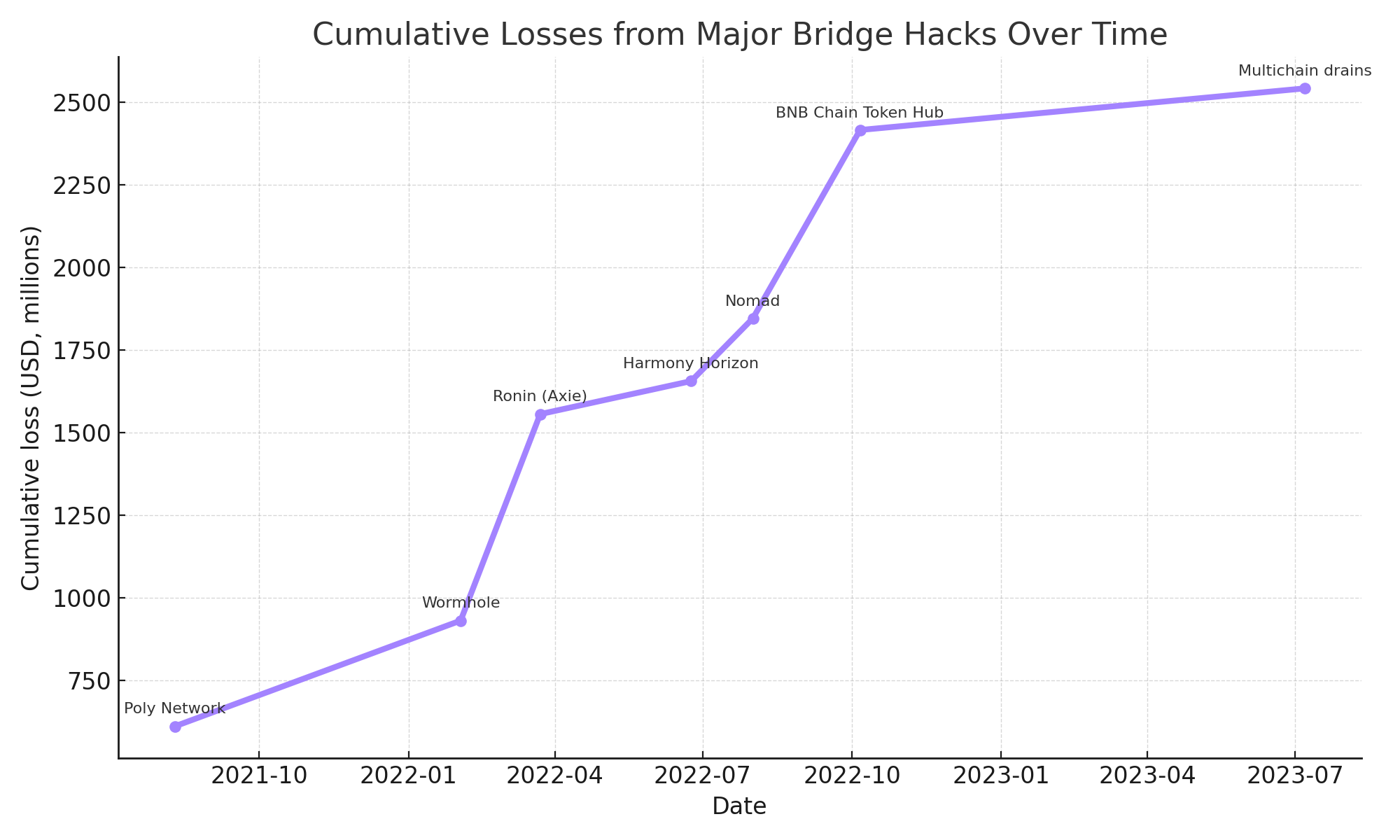.png)
Mintlayer Voices #1 with @MintlayerHunter
Every time another bridge gets hacked, the same question comes up, why did we move away from peer-to-peer in the first place? Billions have been lost to cross-chain convenience. Wrapped assets promised flexibility, but they traded away the one thing Bitcoin always nailed trustless finality. Now atomic swaps are making a quiet comeback. They are native, non-custodial, and do not rely on any middlemen. Just you and the counterparty the way it was always meant to be. What is happening is not some new trend. It is a return to first principles.
The Bridge Era: Built on Convenience, Not Trust
Bridges were supposed to connect ecosystems. Instead, they exposed their weakest points. According to Chainalysis, cross-chain bridges have been the single largest target in crypto, with over $2.6 billion stolen with major incidents including Ronin ($625 M), Wormhole ($320 M), BNB Token Hub ($570 M), and Multichain ($126 M) with many others still unresolved. The whole point of crypto was to remove that trust gap, not rebuild it in a fancier way.

Native Swaps Fix the Core Problem
Mintlayer’s approach to atomic swaps uses a special type of smart contract that allows trades to happen directly without wrapped tokens or custodians. They rely on hashed time-locked contracts (HTLCs) which are like a timed locked escrow controlled by a smart contract instead of a third party meaning each trade either completes or is automatically canceled if requirements aren’t met, removing trust from the equation entirely. This enables users to trade Bitcoin with other tokens across different chains peer-to-peer, with no intermediaries, while maintaining extremely high security standards. Atomic swaps eliminate single points of failure because there are no bridges, no custodians and no pooled honeypots. Mintlayer atomic swap infrastructure is now being deployed in DEXs like RioSwap currently on Testnet. Platforms like Mintlayer are proving that it’s possible to build compliant, institutional-grade financial tools without abandoning true decentralization.
Why This Moment Matters
Regulations are tightening. Bridges and custodians are under increasing scrutiny. This shift back to native swaps is more than technical, it’s philosophical. It’s about taking back control, while still building a system institutions can safely integrate with. The future of finance on Bitcoin isn’t just about speed or yield it’s about resilience and integrity. Peer-to-peer liquidity is how we get there censorship-resistant, compliant, and built on trustless rails.
Bitcoin Over Bridges
The last few years have proven that convenience comes at a cost. The next wave of Bitcoin innovation won’t be about who can connect the most chains, it'll be about who can remove the most trust. That’s how Bitcoin’s original design scales not by reinventing it, but by returning to it.
About Mintlayer Voices
A special thank you to @MintlayerHunter, one of our longtime supporters, for authoring Mintlayer Voices #1.
Mintlayer Voices is our new series for community perspectives. We publish opinion pieces and timely analyses from builders, researchers, and curious minds across Bitcoin, DeFi, finance, regulation, and emerging tech. The goal is simple: bring more smart voices into the conversation and showcase them across our site and social channels. Writers may remain anonymous using a handle, or include a short bio.
Want to write the next installment? We’re accepting a limited number of guest contributors. Selected pieces will be featured on our blog, X, Telegram and amplified across all our communities to more than 100,000 followers across all channels.
If you want your voice heard: Apply Here